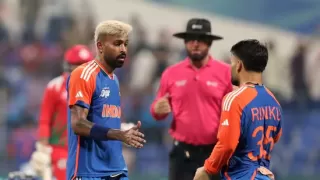The Top 5 Rules Cricket needs to change

Nobody could have written a greater screenplay for the 2019 World Cup finale. Other than the International Cricket Council (ICC), which is the entity that oversees cricket. Even though we will debate for years to come whether or not this exciting World Cup 2019 final lived up to its hype, many cricket fans are incensed over the ICC regulations because no team lost the final and only one team emerged victorious.
The Top 5 Rules Cricket needs to change
These are the five cricket rules that should be changed right away.
-
Tied Super Over

Image Source: Twitter
What are the chances of a draw in the World Cup Final? And the Super Overcoming to a draw as well?
The outcome remained to be decided in the World Cup final between England and New Zealand. The side with more boundaries scored wins the match in a drawn Super Over, under current ICC regulations. This is comparable to a side winning the World Cup of football based on ball possession following a draw penalty shootout.
After the game, captain Kane Williamson of New Zealand said it was "tough to swallow" that the World Cup champions will ultimately be determined by regulation. More harsh in his comments, former Indian cricketer Gautam Gambhir called the ICC ruling absurd.
-
Overthrow off the batsman's bat or body

Image Source: Twitter
Though overthrow runs have played a significant role in numerous high-stress games throughout history, Ben Stokes's boundary-bound overthrows that resulted in six runs will be remembered for many years to come. MCC regulations meant that the umpires had little choice but to award runs to the batting side, even though Stokes apologized promptly after the unintentional mistake. The ICC should repeal this contentious legislation, however, it is still unclear if the umpires should have awarded 5 or 6 runs for that crucial overthrow.
-
Soft signal

Image Source: Twitter
This law is really strange since the soft signal lacks any hard logic. Since it was believed that sometimes camera footage cast doubt on catches that were deemed clean, the soft signal for contested catches was established. As a result, the on-field umpires continue to have the major responsibility for determining decisions. However, the umpire now frequently rules based on players' initial reactions when contested catches occur, which makes it challenging to overturn in the absence of solid proof. This is what the soft signal has done to the game. This is where the TV umpire should be involved since he can make a better decision on a borderline catch with several camera angles than an on-field umpire observing the play with his unaided eyes from 25 yards away.
-
On-field No-Ball

Image Source: Twitter
The task of the on-field umpires is difficult. officiating the entire game, making sure that it is played by the rules, keeping a close watch on the line and length of each ball that may be called leg before wicket, and signalling wides and no-balls. Although technology has given on-field umpires more leeway in calling run-outs, LBWs, and even tight catches, the front-foot no-ball call from the umpire has to be updated as quickly as possible. The on-field umpire now only consults with the TV umpire on the ball's legality in dismissal instances. Although reducing mistakes is a positive start, a no-ball that hasn't been called frequently determines the outcome of the game. As an example, consider the Royal Challengers Bangalore vs. Mumbai Indians game, when the bowling team won because the umpire missed Lasith Malinga's no-ball.
It's time to give the TV umpire more authority over front-foot no-ball calls to ease the workload of the on-field umpire and ensure that the game of thin margins is played with the fewest possible errors.
-
DRS dead-ball rule

Image Source: Twitter
Although this scenario hasn't occurred in a match yet, cricket enthusiasts have been discussing it on the internet for some time as a possible match-breaking event. Take this as an example: in a Super Over, a batsman needs just one run to win the match on the final ball if the scores are level. The batsman runs for a leg bye as the ball strikes his pad and deflects into the open fine-leg area. When the bowling side files an appeal, the umpire declares the batsman out for leg before wicket (LBW), which the batsman challenges for review. Will the batter receive the leg-bye run now if the DRS rules in his or her favour?
Not at all. because the ball is considered dead as soon as the umpire decides, according to the DRS rule. Therefore, in this case, an incorrect DRS ruling will prevent a legitimate leg-bye. The ICC needs to take the initiative on this statute now that it has the potential to be a disaster. You have been forewarned, ICC.
Also Read: Fixtures for the 2024 Twenty20 World Cup













Give Your Feedback